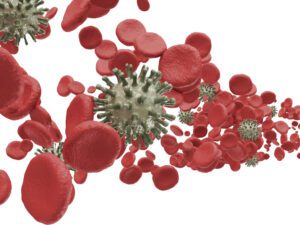Cervical cancer, a type of cancer that occurs in the cells of the cervix, often presents with subtle signs and symptoms that may go unnoticed in the early stages. It is crucial to recognize these early symptoms to improve the prognosis and treatment success.
The cervix, located at the lower part of the uterus that connects to the vagina, is vulnerable to cellular changes that can lead to cancer.
Common symptoms of cervical cancer may include abnormal vaginal bleeding, such as bleeding after sexual intercourse, between periods, or after menopause. Women may also experience pelvic pain or pain during intercourse. These signs can often be mistaken for menstruation or other benign gynecological conditions, which makes awareness and timely medical consultation key for early detection.
Other potential symptoms of advanced cervical cancer include unusual discharge from the vagina, which may be watery, bloody, or have a foul odor. Kidney function may be affected if the cancer obstructs the urine passage from the kidneys to the bladder. By understanding these symptoms, individuals can seek medical advice promptly, enabling early-stage diagnosis and increasing the effectiveness of treatment options available.
Symptoms & Causes
Understanding the symptoms and causes of cervical cancer is crucial for early detection and effective treatment.
Symptoms of Cervical Cancer
Cervical cancer may not produce noticeable symptoms in its early stages. However, as the disease progresses, symptoms might include:
- Abnormal vaginal bleeding, such as bleeding between periods, after intercourse, or after menopause.
- Unusual discharge that may be watery, bloody, and may have a foul odor.
- Pelvic pain or pain during intercourse.
Causes of Cervical Cancer

Cervical cancer originates when healthy cells in the cervix develop mutations in their DNA. The following are primary causes:
- Human Papillomavirus (HPV) infection is the most significant cause, with high-risk strains leading to cervical cancer.
- Other causes remain less understood, but several contributing factors have been identified, such as smoking or a weakened immune system.
Risk Factors
The risk of developing cervical cancer increases with certain factors:
| Risk Factors | Description |
|---|---|
| HPV Infection | A sexually transmitted virus with several strains, some of which are cancer-causing. |
| Smoking | Increases the risk of cervical and other cancers. |
| Immunosuppression | Including HIV infection, reduces the body’s ability to fight HPV. |
| Sexual History | Multiple sexual partners or early sexual activity can increase HPV exposure risk. |
| Other STIs | Concurrent sexually transmitted infections like chlamydia, gonorrhea, or syphilis can increase the risk. |
When to See a Doctor
It is important to see a healthcare professional if any of the following occurs:
- Persistent abnormal vaginal bleeding.
- Recurring pelvic pain.
- Continuous unusual vaginal discharge.
Regular screenings and follow-up appointments with a healthcare provider can help detect cervical cancer at an early stage when treatment is most effective.
Diagnosis & Treatment

Early detection and appropriate management are pivotal in improving the outcomes of cervical cancer.
Diagnosis
Pap test: Regular Pap smears are recommended for women as part of routine screening. This test involves collecting cells from the cervix to detect potential pre-cancerous or cancerous cells.
HPV DNA test: This test detects the presence of high-risk types of human papillomavirus (HPV) often associated with cervical cancer.
Biopsy procedures may include:
- Colposcopy: Inspection of the cervix with a magnifying instrument.
- Cone biopsy (conization): Removal of a cone-shaped section of abnormal tissue for examination.
A pelvic exam is often performed to check for any abnormalities.
Treatment Options
Surgery options depend on the stage of cancer and may include:
- Conization: Removing a cone-shaped piece of tissue from the cervix.
Radiation therapy can be used:
- As a primary treatment.
- To reduce the risk of recurrence after surgery.
- To alleviate symptoms in advanced stages of cancer.
Chemotherapy is often:
- Combined with radiation therapy.
- Used to treat advanced stages of cervical cancer.
Targeted therapy drugs may be used, focusing on specific abnormalities in cancer cells.








